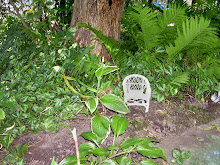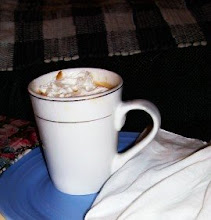 |
| Prized Austrian vase from Germany |
It is not the prettiest vase on the block! It has scars and has had a tough life. Someone must have thought it pretty important to be kept high in the cupboard, where it would be safe. It was kept on "His" side of the cupboard. Why was it so important? Because it was " His"?
Who makes up the prior family of "His", the owners of this beat up vase from the Meyer cupboard? I don't know what stories it brought to the Meyer house in its former days.
 |
| Seil side of Meyer family at Sunnyslope |
Has it been a part of life with the Meyer? Seil? Vogel family? Korn? Schmidt? Brookmann? Jaeschke? Coleman? Perhaps the stories go back to Germany. Dahlenburg ? Neetzendorf ? Oldendorf? Nahrendorf ? Radenbeck? Gross Thondorf ? Himbergen? Danzig? Hildesheim? Eichdorf ? Sueschendorf ? Ventschau ? Dannenberg ?
What kind of tough life has beat up this vase? You can see it has something extra added to its outer side. Top and bottom. I really do know that answer. I know where the foreign material came from. It went through a house fire in 1945 or 1946, but was saved. It may have gone through others, but I only know about that fire. I am not sure exactly, how it was saved. But I was told that they saved only a few items from the burning home. I suspect it was brought out in the heavy buffet that someone had carried out. I was told that it had amazed everyone how heavy the buffet was; and how they still had carried it out so easily short handed as they were. A neighbor carried it out, but I have forgotten who the strong person was.
The Meyer family always felt lucky that the neighbors could save that buffet, table and chairs. But they were especially happy about that buffet, because it contained their few pictures, dishes, important papers, and other momentos. That is all that was saved from years of heritage of the family. I doubt that there were many items that were carried with the families, anyway. When they immigrated they could only bring so much. So, I am sure that whatever was passed down in those days from loved ones, are indeed, dear to the heart. [Some families had large families and others had small ones.]
Something melted on to the vase and it couldn't be removed. I am not sure what that was. I suppose they have tried to remove it. Rather than risk the piece they kept it as it was. I have seen a box of melted pile of coins that went through the fire. I suppose some other material was melted in between it all. They never got around to see, if there was anything that could be done about redeeming the worth of the little pile of coins.
I know they saved the buffet, Queen Ann table, and chairs. The stuff in the buffet too. I don't know what else was saved. The people who carried these things out had to do so in a hurry. Because after the fire had spread to a dangerous area of the house, they had to stop. Why I asked, why didn't they save more. I mean, after all the fire was still in another section of the house. I was told it didn't matter, because there had been explosives kept in the other section of the house. They just didn't want anyone inside after the fire took hold.
It was those kind helpful neighbors who looked out for each other that were there helping. Even when the fire truck came, the Meyers did not want anyone close enough to the fire to risk their lives to put the fire out. I guess it couldn't be done, before it reached the dynamite. The neighbors were very giving and helpful through it all. The family felt thankful to get what they did, and that no one was hurt.
Other pictures and momentos, bedding, towels, furniture, clothes, ect. were given to the family. Later new items were added to their cupboard. But still they held on to this vase. i suppose For that which it stood for, for memories it had carried with it for so long. It is really hard to discard something other loved ones have treasured. Especially if, someone told you the story, and then gave this treasure to you.
Even the amount of risk of life for this piece makes it extra special, you know?
I do know the vase still carries a mystery. I only know what I have been told. Which is not much, but enough, I guess to understand what happened back then.
Perhaps others in the branches of the Meyer family have something like this vase? Maybe someone close to this family in Minnesota or Iowa might know about the piece? Maybe someone knows something about this kind of piece that comes from Austria. I would sure like to know more. Email me if you know.
I do know that I am keeping it in my cupboard, on "Her" side.
just me
jo

 This guy is a big charmer. Not only with the chicks. Wouldn't you like to just give him a hug. Boy, the love in that picture is evident. I tried to reduce the width on this picture to get away from that light patch. But it kept reverting back. Maybe I can try again another day. It is such a keeper.
This guy is a big charmer. Not only with the chicks. Wouldn't you like to just give him a hug. Boy, the love in that picture is evident. I tried to reduce the width on this picture to get away from that light patch. But it kept reverting back. Maybe I can try again another day. It is such a keeper.














